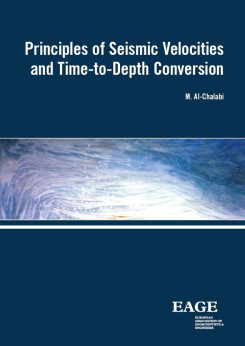Principles of Seismic Velocities and Time-to-Depth Conversion
Despite its fundamental importance for acquiring an accurate picture of the subsurface, the topic of time-to-depth conversion on the basis of true propagation velocities has never been addressed in the form of a comprehensive, dedicated book. The present book has long been overdue for bridging this obvious gap in geoscience. Geophysicists proficient in data processing fully appreciate that depth imaging, despite the excellence achieved in data quality and lateral positioning, does not amount to true or accurate depth conversion. This is because modelling “velocities” in processing (described in the book as “pro-velocities”) can often be quite different from the actual propagation velocities.
The many forms of velocities, their interrelationships, their derivation, their assessment and the various factors that could affect their stability and accuracy, are all thoroughly covered. Common misconceptions are brought to notice. The main thrust is for the use of these velocities for time-todepth conversion. Extensive details of depth conversion procedures are established, together with velocity models, each to suit the various depth conversion situations arising in practice. Factors affecting depth conversion results and estimation of the associated uncertainty are extensively covered. Clarity and simplicity of presentation and practical applicability are a prime consideration. Demystifying some topics that are vague to a majority of geoscientists (e.g. anisotropy) also receives ample attention.
The book is written for the interpretation geophysicist working in exploration and development, for the seismic processor seeking a wider perspective on the quality of output and on the provision of the data to help the “frontline” geoscientist, for the geologist using geophysical methods as a tool at various levels of detail in the evaluation of the subsurface, and for the geoscientist at large.
- Genre: All Books, Geophysics

